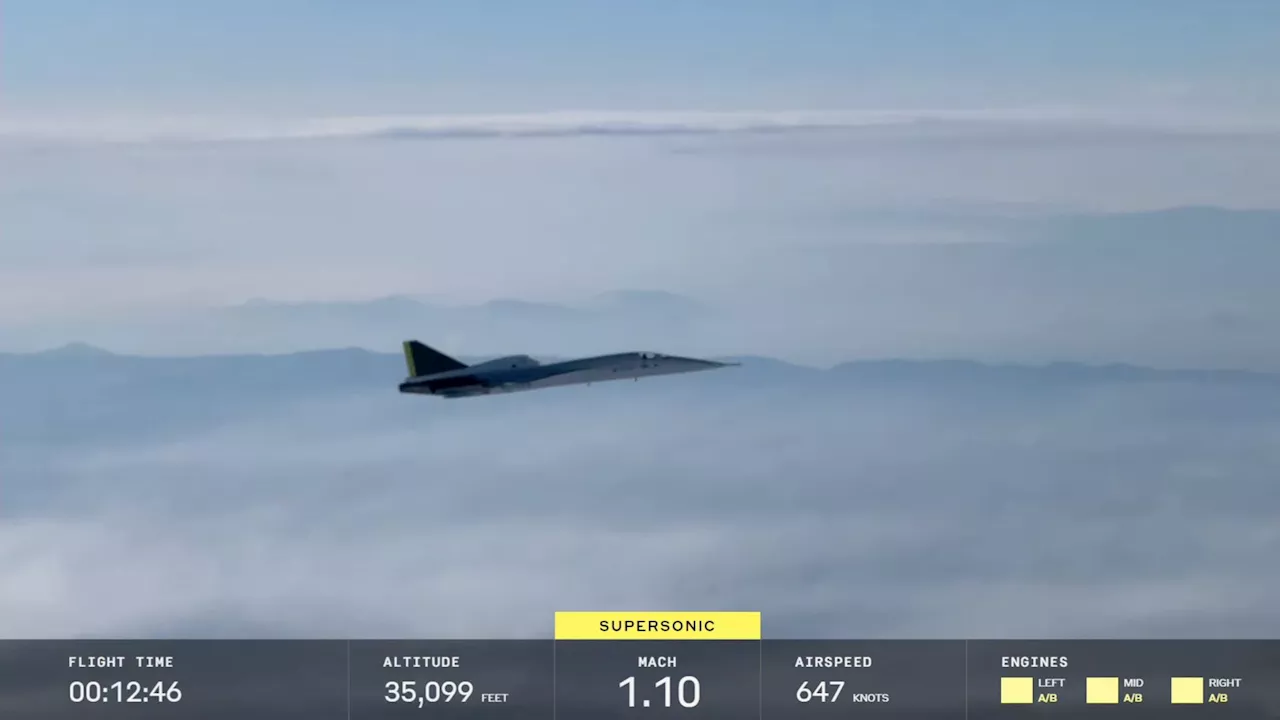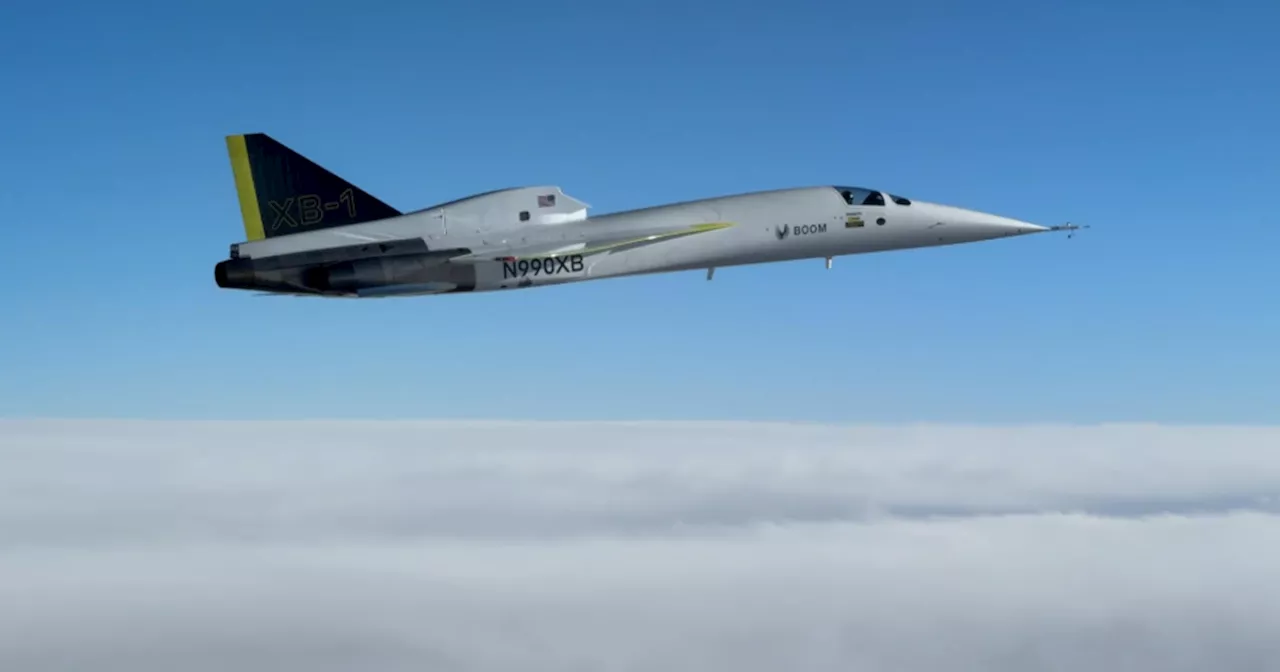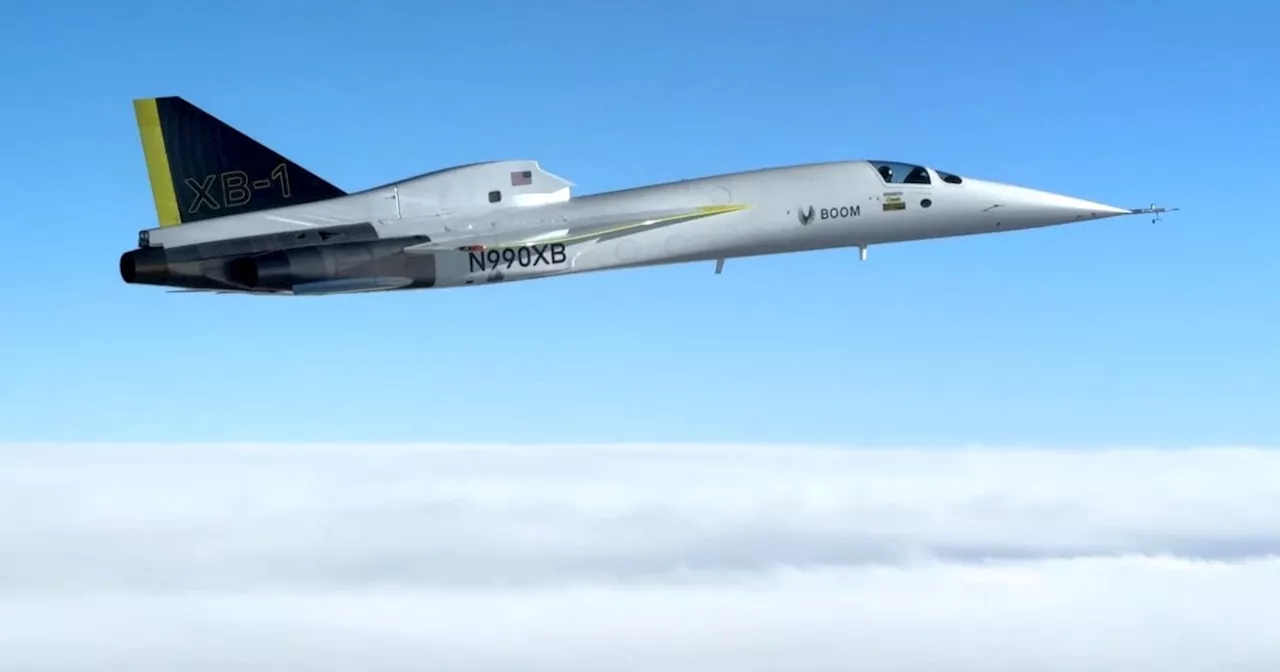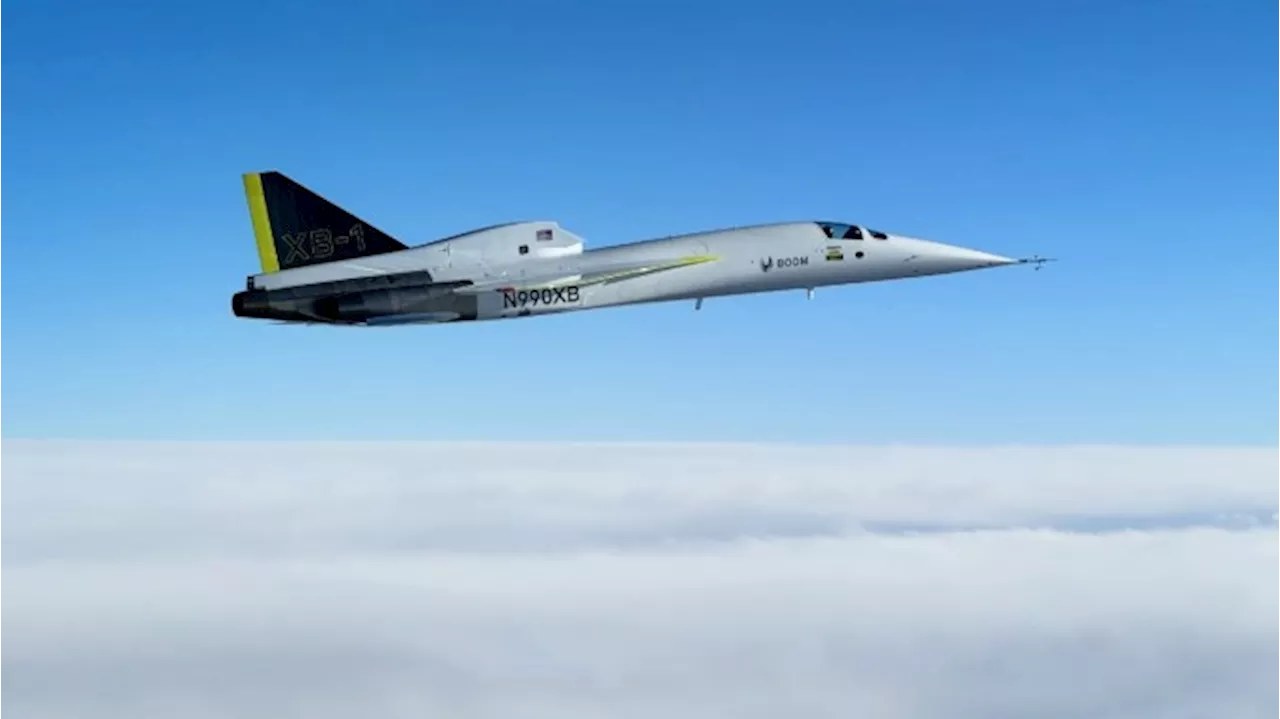Boom Supersonic's XB-1 aircraft successfully flew at supersonic speeds without producing an audible sonic boom on the ground, marking a major milestone in the development of commercial supersonic travel. This advancement utilizes the physics of Mach cutoff to bend sonic booms upwards, preventing them from reaching the ground.
Boom Supersonic, a company pioneering the development of passenger aircraft capable of exceeding the speed of sound, has made a groundbreaking announcement: its planes will be able to fly at supersonic speeds without generating an audible sonic boom on the ground below. This remarkable feat was achieved during a test flight of the company's XB-1 aircraft late last month.
Boom Supersonic confirmed the news in a press release on Monday, stating, 'During its historic first supersonic flight on January 28, 2025, Boom’s demonstrator aircraft, XB-1, broke the sound barrier three times without generating a sonic boom that reached the ground, demonstrating that quiet supersonic travel is possible.' Specialized microphone arrays strategically positioned along the flight path confirmed that sonic booms did not reach the ground as the XB-1 reached a top speed of Mach 1.12.Blake Scholl, the founder and CEO of Boom Supersonic, explained that this advancement in supersonic flight is made possible by a phenomenon known as 'Mach cutoff.' In a series of posts on X (formerly Twitter), Scholl elaborated, 'It's actually well-known physics called Mach cutoff. When an aircraft breaks the sound barrier at a sufficiently high altitude, the boom refracts in the atmosphere and curls upward without reaching the ground. It makes a U-turn before anyone can hear it.' Scholl further elucidated the science behind Mach cutoff, stating that sound waves, like light rays, bend as they pass through mediums with varying speeds of sound. Since the speed of sound changes with temperature, and temperature varies with altitude, sonic booms can bend upwards at higher altitudes.Scholl emphasized that this technology requires advancements beyond what was available during the era of the Concorde supersonic jet. He suggested that Mach cutoff could be effectively utilized for speeds up to Mach 1.3, but pointed out that at higher speeds, the sonic boom geometry would prevent it from being avoided. While supersonic flight over land is currently prohibited in the United States, Scholl expressed hope that this regulation would change. He believes that the president could issue an executive order allowing for supersonic flight over land as long as it doesn't generate an audible sonic boom.Although the public will have to wait a while longer, Boom Supersonic is actively working on developing its Overture passenger aircraft. The company plans to begin construction of the first Overture aircraft at its North Carolina factory in approximately 18 months, with the target date for the first aircraft to be completed in about three years. Boom Supersonic aims to have Overture available for passenger flights by the end of 2029. With an already impressive order book of 130 aircraft, including commitments from major airlines like American Airlines, United Airlines, and Japan Airlines, the future of supersonic travel appears bright. Boom Supersonic is also collaborating with Northrop Grumman on government and defense applications of the Overture aircraft
SUPERSONIC FLIGHT BOOM SUPERSONIC XB-1 MACH CUTOFF OVERTURE SONIC BOOM FAA COMMERCIAL AVIATION
United States Latest News, United States Headlines
Similar News:You can also read news stories similar to this one that we have collected from other news sources.
 Boom Supersonic Achieves Historic Supersonic Flight with XB-1 PrototypeBoom Supersonic's prototype supersonic aircraft, the XB-1, successfully reached supersonic speeds in its inaugural flight, marking a significant milestone in the pursuit of faster and more efficient air travel.
Boom Supersonic Achieves Historic Supersonic Flight with XB-1 PrototypeBoom Supersonic's prototype supersonic aircraft, the XB-1, successfully reached supersonic speeds in its inaugural flight, marking a significant milestone in the pursuit of faster and more efficient air travel.
Read more »
 Colorado-Based Boom Supersonic Achieves Supersonic Flight MilestoneBoom Supersonic, a Colorado-based aerospace company, makes history with a supersonic flight over the Mojave Desert, demonstrating the viability of independently developed civil supersonic aircraft in America. The company's XB-1 demonstrator aircraft broke the sound barrier, paving the way for the production of their Overture supersonic airliner.
Colorado-Based Boom Supersonic Achieves Supersonic Flight MilestoneBoom Supersonic, a Colorado-based aerospace company, makes history with a supersonic flight over the Mojave Desert, demonstrating the viability of independently developed civil supersonic aircraft in America. The company's XB-1 demonstrator aircraft broke the sound barrier, paving the way for the production of their Overture supersonic airliner.
Read more »
 Boom Supersonic Achieves First Supersonic Flight with XB-1Boom Supersonic has successfully completed the first supersonic flight of its X-B1 demonstrator aircraft, marking a significant milestone in the development of its Overture passenger jet.\The flight, which took place on Tuesday, is the first human-piloted civil supersonic flight since Concorde's retirement over 20 years ago. It paves the way for the return of commercial supersonic flights aboard Overture, potentially before the end of the decade.
Boom Supersonic Achieves First Supersonic Flight with XB-1Boom Supersonic has successfully completed the first supersonic flight of its X-B1 demonstrator aircraft, marking a significant milestone in the development of its Overture passenger jet.\The flight, which took place on Tuesday, is the first human-piloted civil supersonic flight since Concorde's retirement over 20 years ago. It paves the way for the return of commercial supersonic flights aboard Overture, potentially before the end of the decade.
Read more »
 Boom Supersonic's XB-1 Jet Achieves Supersonic SpeedBoom Supersonic's experimental jet, the XB-1, successfully broke the sound barrier, reaching Mach 1.122 during a test flight over the Mojave Desert. This milestone marks a significant advancement for the company, which aims to develop a commercially viable supersonic airliner.
Boom Supersonic's XB-1 Jet Achieves Supersonic SpeedBoom Supersonic's experimental jet, the XB-1, successfully broke the sound barrier, reaching Mach 1.122 during a test flight over the Mojave Desert. This milestone marks a significant advancement for the company, which aims to develop a commercially viable supersonic airliner.
Read more »
 Boom Supersonic Achieves Mach 1 with XB-1 Demonstrator, Eyes Future Passenger FlightsBoom Technology, a private company striving to bring supersonic air travel back, achieved its first supersonic flight with the XB-1 demonstrator plane. This test flight paves the way for the development of Overture, a planned supersonic passenger jet capable of flying at twice the speed of current commercial airliners. Boom aims to make supersonic travel more affordable and accessible than its predecessor, the Concorde, which faced financial challenges and was retired in 2003.
Boom Supersonic Achieves Mach 1 with XB-1 Demonstrator, Eyes Future Passenger FlightsBoom Technology, a private company striving to bring supersonic air travel back, achieved its first supersonic flight with the XB-1 demonstrator plane. This test flight paves the way for the development of Overture, a planned supersonic passenger jet capable of flying at twice the speed of current commercial airliners. Boom aims to make supersonic travel more affordable and accessible than its predecessor, the Concorde, which faced financial challenges and was retired in 2003.
Read more »
 Boom Supersonic's XB-1 Breaks Sound Barrier in US, Paving Way for Supersonic Passenger TravelBoom Supersonic's experimental XB-1 aircraft achieved supersonic flight over the continental US on January 28th, marking a significant milestone for the potential return of commercial supersonic travel. This is the first time a civil aircraft has flown faster than sound over the US mainland. The successful test flight, reaching a speed of Mach 1.11, showcases the technology that could enable the company's planned Overture airliner to carry passengers at Mach 1.7 by 2029.
Boom Supersonic's XB-1 Breaks Sound Barrier in US, Paving Way for Supersonic Passenger TravelBoom Supersonic's experimental XB-1 aircraft achieved supersonic flight over the continental US on January 28th, marking a significant milestone for the potential return of commercial supersonic travel. This is the first time a civil aircraft has flown faster than sound over the US mainland. The successful test flight, reaching a speed of Mach 1.11, showcases the technology that could enable the company's planned Overture airliner to carry passengers at Mach 1.7 by 2029.
Read more »
